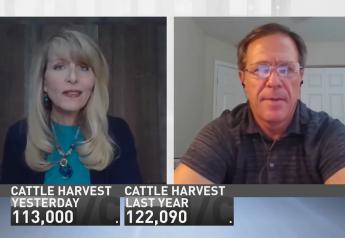Selective Spraying: Consider This Before You Go All-In

Selective spray application technology (See & Spray, green on green, etc.) represents the ideal fusion of advanced technology with sustainability and efficiency.
Growers reduce herbicide usage and save resources while killing off weeds in their fields, and the environment and soil have less exposure to crop protection chemicals.
Much has been written about selective spraying and what it could mean to farmers. This year represents a high-water mark for the technology. It appears selective spraying systems will be in greater distribution this season than ever before.
“For anyone still skeptical about this technology, it’s abundantly clear it works,” says Andrew Selck, partner, Kearney. “It’s about the stakeholders and will it create value for the farmers? A lot of different people in the ag ecosystem will need to act to make this technology successful.”
Those stakeholders include farmers, equipment manufacturers, ag retailers, and crop input manufacturers. For now, we’ll focus on the farmer and some of the questions that will inevitably come up as selective spray kits hit the farm.
Selck advises farmers think through the following based on their own unique on-farm use cases:
- Do I go with a price per acre subscription or purchase a system outright?
- How effective is the technology vs. traditional broad acre application?
- How do I know what to spray, when to spray, and what to put in the tank? Can I still do fall burn down with this technology? What about in-furrow weed applications in the spring?
- How much will the machine spray? And what happens when the sprayer comes back with a third of the tank still full of product, but with no acreage left to spray? Do I dispose of that tank mix? Can I pump it into nurse tanks and use it later?
- Who do I call when there is an issue? The equipment company that sold me the selective spraying tech? The chemical company? And how do I prove one is directly responsible for a misapplication or chemical failure versus the other?
- And, perhaps most importantly, how do I pencil out this technology to confirm it’s a good investment for my farm?
Selck has some data that applies there.
A 2024 Iowa State production analysis report predicted that Iowa farmers will apply 25% less chemicals this year than in year’s past. Those same farmers average $55 per acre spent on crop protection annually. Which raises yet another question: What do I do with that $11.25 per acre I am now able to shave off my annual chemical bill?
Selective spraying is here to stay, but some of these questions need to be answered before farmers fully commit.
More Smart Farming Stories:
Use Data To Increase Your Equipment's Value
Ag Tech and Connectivity: It Matters More Than Ever Before
The Pros And Cons Of Being An Early Adopter
Gaining Traction: What Farmers Need to Know Now About Carbon Intensity







